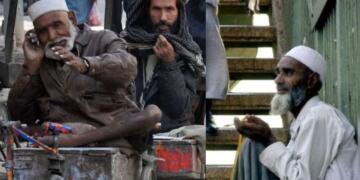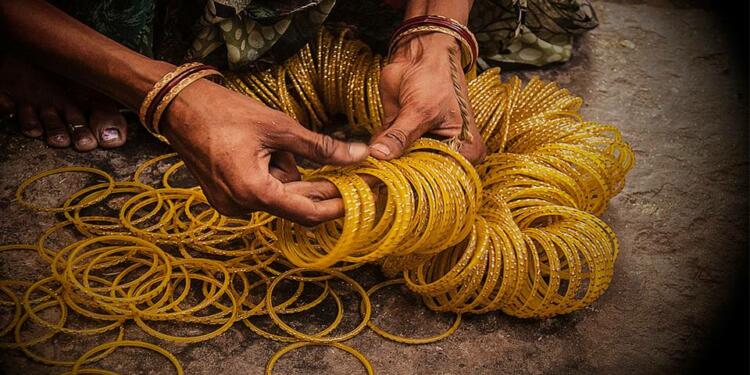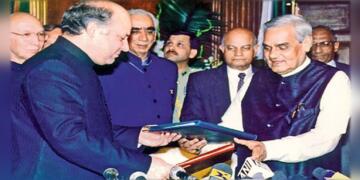- Firozabad is the hub of glass bangles as the industry is valued around Rs 10,000 crores
- But, it is stagnating due to incessant exploitation of labour and lack of enforcement of regulatory mechanism
- Time has come when other clusters of bangle making be identified and provided with incentives
In spite of west-led modernisation attempting to throw out traditions from India, the charm of cultural symbols has not died down. Instead, they are reappearing in new forms or shapes. Bangles being one of the oldest choices of Indian women still hog the limelight on more occasions than one. But, for the past few years, lack of regulatory oversight on the processes of making it is threatening the existence of the Firozabad bangle industry, possibly the biggest hub of raw bangles in India.
Firozabad’s connection to bangles
Located near Agra, Firozabad is known for Bangles, especially Glass Bangles. Varying claims indicate that Firozabad has been producing them for at least 200 years. The process kicked off with rejected glass articles melted in a locally made furnace called “Bhanisa Bhatti”. Needless to say, wood and coal were used as fuel for Bhattis.
Initially, glasses were coloured and put to use in jhad, fanus (Chandelier) and other decorative elements of royal courts and havelis. Soon, locally made Kadas, Kangans and bangles started to gain popularity and today the place is also known as Suhag Nagri. Suhag represents the husband and bangles are a symbol of a woman’s marital status.
Shining bangles are smokescreens
But, the glitter of final products hides a lot of smoke behind the production line. Experts state that bangle making is a 32-stage process. It is provably wrong to assume that activities in all these stages are carried out in factories. Most of the homes in Firozabad have a dedicated corner for at least half of these operations.
In fact, houses are the places where symmetry providing features like decoration, soldering of the joints, straightening and bending of bangles take place. In other words, evenness of molecular distribution of the final product is done outside factories. The disappointing facet of this feature is that it is a huge human crisis.
Children are in precarious state
At home, these responsibilities are shouldered mainly by women and children. Children are preferred because they have smaller hands which help in giving shape to bangles. As these kids get expert in doing their job, they start to take time outside their study hours and get employed by factories. In factories, these children are mainly asked by owners to check the quality of the final product.
They touch the Bangles with stone and listen to sound they make in order to decipher whether they are broken or cracked. The exploitation is immense. Reports suggest that a single child checks about 16,000 bangles per day. They are paid a paltry sum of less than Rs 100 for it. The financial independence for them is more important than the sum. Only 40 per cent of children in Firozabad go to school.
Polluted factories
Those kids who were not passed on generational knowledge get employed as unskilled workers along with elders. They work in glass furnaces in extremely high temperatures. The melting point of silica sand (from which bangles are made) is artificially brought down to 1,100 degree Celsius. The surrounding atmosphere is protected from extreme temperature by mud coating.
The full process of melting is carried out in small cell like rooms where there is very little scope of dirty air skipping the local atmosphere. Few years ago, coal used to be the only source of heat for these units. The prevalence of coal along with virtually zero escape routes for polluted air determines life expectancy of workers employed in nearly 200 glass bangle factories.
Factory owners exploit labourers
The coal furnaces and other chemical processes emanate flue products. Due to the lack of Chimneys (they are there only for the main furnace), all of these products are trapped inside the atmosphere. According to a decade old report by the Labour Ministry, long term and sometimes life-long exposure to these gases is the main reason behind prevalence of chronic bronchitis among the residents. Additionally, intense heat and sound also make the working environment extremely hostile for these workers.
Labourers could tolerate hazardous circumstances if they were paid enough compensation. In spite of having draconian shifts like 4AM to 7PM, these workers sometimes fail to even earn the minimum wage. The Labour Ministry also found that most of them are not even provided with lunch Breaks, protective gears or even enough leeway to wash their hands.
Women’s plight is worse
The condition of Women workers is beyond worse. They are mainly asked to clear the molten gases which fall out of these furnaces and compensation is sometimes worse than what children get for checking the quality of bangles.
Legal rights such as maternity benefits, equal pay are just a utopian corporate concept for these poor women. These are primary reasons why families like to use their skills in giving final touch to bangles at home.
Numbers indicate that more than 90 per cent of Firozabad is either directly or indirectly dependent on the bangle industry for their livelihoods. Even that number is not vital enough for local representatives to take care of their health. R K Mittal, President of UP Glass Manufacturers’ Syndicate said that a clinic exists in the city for labourers. Well, what do they do? They just refer these patients to Agra.
Solutions have complicated the problem
On its part, Indian Polity has tried to sort out the issue. For instance, the Supreme Court banned the use of coal in factories. Then Gas became the only option. Currently, the government is taking the responsibility of providing natural gas to these units.
But, compared to the requirement of around 12-15 lakhs cubic metrics of gas per day, it is able to supply only around 11 lakhs cubic metrics. The industry valued at around Rs 10,000 crores has to rely on costlier Regasified liquefied natural gas (RNLG) to make up for the shortage. It would not be far-fetched to speculate that factories rely on coal for cost cutting.
Covid-19 break and need for rethink
When Covid-19 arrived, workers finally got some relief from their life-long tenure. For some of them, the halt in the production line was probably the first one in many generations. It allowed them to hunt for safer alternatives as well. As a result, Firozabad has been struggling to revive its bangle manufacturing after Covid-19.
Other clusters need to be identified
Incidentally, it also gives policymakers much needed time and space to design policies allowing for decentralisation of bangle manufacturing. Currently, apart from Firozabad, only Bhagyanagar is known as the hub of bangles. But, these are not the only cities which produce these bangles.
Read more: Main takeaways from BJP’s National Executive Meet at Bhagyanagar
Varanasi in Uttar Pradesh, Bhagalpur and Muzaffarpur in Bihar are some of the other places where bangles of similar, if not better, standards are produced. In fact, Muzaffarpur’s Lahti bangles made their way to the Bachchan family through Aishwarya Rai’s wedding and Sushma Swaraj ji too was found of Lahti bangles from Muzaffarpur.
Clear cut policy is need of the hour
What these bangle makers require is a clear cut policy regarding the sector. For instance, it is a sub-sector of MSMEs, and MSMEs are provided with clear cut tax regimes as well as incentives. But, for bangle makers, taxations have proved to be only a nightmare. On one hand, the government is constantly failing to provide required gas to bangle sellers all around the world, while on other it is further complicating their problems by imposing new tax on them.
Read more: MSMEs and Exports-Two drivers of India’s $5 trillion economy
Government needs to include bangles in the product list of other districts’ One District One Product as well. Additionally, because Firozabad is such a tainted name with respect to exploitation of the labour force, people living even outside the city do not want to work in bangle manufacturing. Strict enforcement of existing labour code, Social Security Schemes and creation of women friendly environments is the need of the hour. Timely inspection of these facilities is also required.
All it needs is a little push
Bangle making to Firozabad is akin to transfer of property. Every generation takes it from their predecessors What Foirozabadis need is a break from generations of slavery. But, to enable such a change, the government needs to incentivise people wishing to contribute in the sector. Trust me; there is no dearth of skilled labour. They are just busy in higher paying and more secure jobs.
The moment the government announces incentives on the lines of PLI Scheme along with strict enforcement of pollution and other human indices protocol, production lines will be scattered to the whole of India. Bangles represent culture and in modern times, freedom from western nihilism and people of a civilisational state can’t stay away from its roots for long.
Support TFI:
Support us to strengthen the ‘Right’ ideology of cultural nationalism by purchasing the best quality garments from TFI-STORE.COM


































